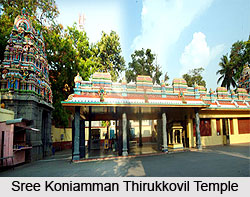 Chinnavedampatti is located in Coimbatore city in the state of Tamil Nadu. It is a suburb of Coimbatore industrial city situated in the north east direction. It is under the Coimbatore Corporation. The region has an average elevation of 338 metres above the sea level. The suburb experiences a pleasant climate throughout the year. The temperature varies between 34 C to 22 C during the summers and winters.
Chinnavedampatti is located in Coimbatore city in the state of Tamil Nadu. It is a suburb of Coimbatore industrial city situated in the north east direction. It is under the Coimbatore Corporation. The region has an average elevation of 338 metres above the sea level. The suburb experiences a pleasant climate throughout the year. The temperature varies between 34 C to 22 C during the summers and winters.
History of Chinnavedampatti
According to history Chinnavedampatti was earlier resided by Brahmins. The region was noted for enchantments of mantras from the Vedas. The place was then known as Vedampatti meaning a place of Veda. During that time very few families resided here hence the local people added the word Chinna meaning small. It was thus, finally known as Chinnavedampatti which means a small place of Veda.
Earlier the main source of income for the people was agriculture. Later with the set up of several industries the place developed into an industrial hub that saw the large scale growth in mechanical and IT industries. Several educational institutions have also developed here. At present Chinnavedampatti is a well developed town with all modern amenities.
Pilgrimage Centres in Chinnavedampatti
Chinnavedampatti is resided by people of different communities and religions. Majority of the population is however Tamilians. There are several temples built in this town that are visited by devotees from different places. Some of the important temples are Sree Koniamman Thirukkovil Temple, Sree Dhandayuthapani Thirukkovil Temple and a great Madam, the Kaumara Madalayam. It is a mutt almost 100 years old and is led by His Holiness Swami Kumaraguruparar.
Major Industries in Chinnavedampatti
Chinnavedampatti has several large, medium and small scale industries that provide employment to people residing in Tamil Nadu as well as in other parts of India. Some of the important and major industries set up here are:
* Unicorn Engineers
* Lakshmi Engineering Industries
* Udaya Metal Industries
* Beekay Steel Industries
* Epes carbide tools India private limited
* Sri Renuka Industries
* CRI Pumps
* Welboro Paints
* STPI
Chinnavedampatti has also set up few international schools and public schools to impart education among the children.
Chinnavedampatt is well connected by all modes of transport. The town is located on the north eastern side of Coimbatore city. It is on the way to Sathyamangalam between NH 67 and NH 209. It shares its borders with Vellakinar, Saravanampatti and Goundampalayam.



















